Since June, Hong Kong police have cracked down on anti-extradition bill protests using a variety of crowd control weapons and ammunition – some used for the first time in local law enforcement.
Commissioner Stephen Lo told the press that, on June 12, officers fired around 150 tear gas canisters, “several” rounds of rubber bullets, and 20 beanbag shots to clear demonstrators. In the weeks after, police also deployed pepper-spray balls and so-called “sponge grenades.”

After the Sheung Wan protesters were cleared on Sunday, netizens circulated a photo showing a pile of spent ammunition used by riot police, which showed a mix of tear gas rounds, tear gas grenades and rubber bullets.
Amnesty International has called on authorities around the world to suspend all transfers of less-lethal crowd control equipment to Hong Kong, including water cannon vehicles, tear gas, pepper spray, rubber bullets, and projectile launchers.
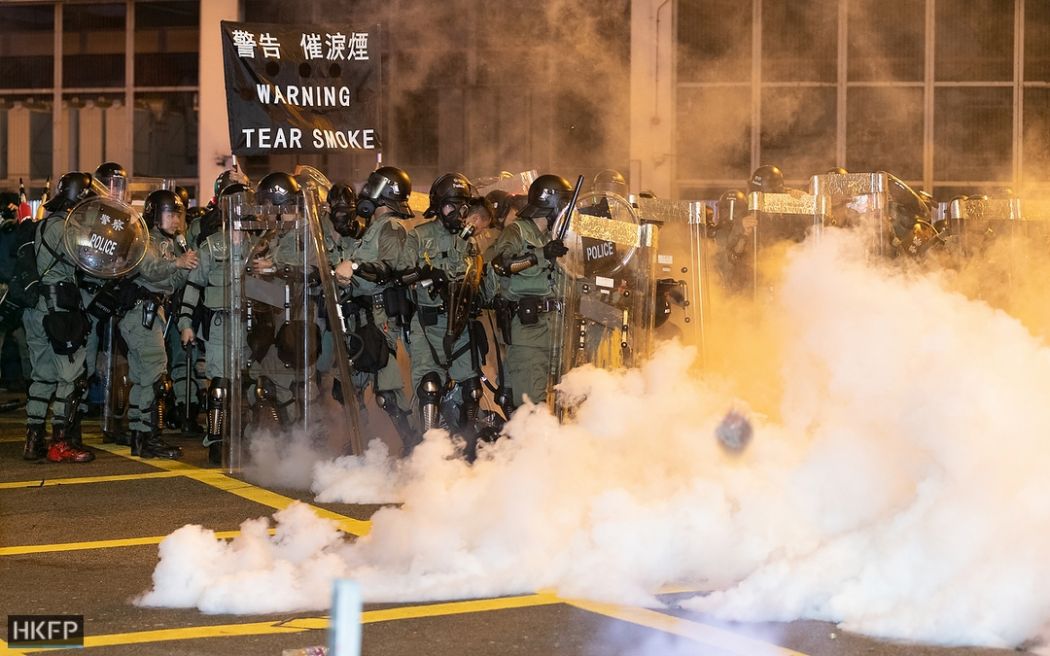
In a petition to the White House, political group Demosisto urged the US government to “suspend any export application of crowd control equipment to Hong Kong to prevent further brutality against Hong Kongers.” The petition received over 55,000 signatures as of Wednesday.
Responding to a picture of made-in-America tear gas canisters, US Senator Ted Cruz raised the possibility of banning the export of tear gas to Hong Kong “if Xi Jinping doesn’t stop eroding Hong Kong’s sovereignty.”
USA banned exporting tear gas crime control equipment to China after the Communist Party massacred dissidents in Tiananmen Square. If Xi Jinping doesn’t stop eroding Hong Kong’s sovereignty & halt attacks on protestors, the US must consider applying the same policy to Hong Kong. https://t.co/uvwkFgtFDV
— Senator Ted Cruz (@SenTedCruz) July 29, 2019
HKFP examines some of the projectiles left at the scene of the violent clashes over the weekend – though some crowd control equipment, like pepper-spray balls, could not be readily identified.
‘Sponge grenades’ (ALS4006D REACT Round)
The projectile is made out of polyurethane, which led it to be called a “sponge grenade” by local media. The manufacturer said the direct-fire round was “designed as a blunt trauma pain compliance round.”
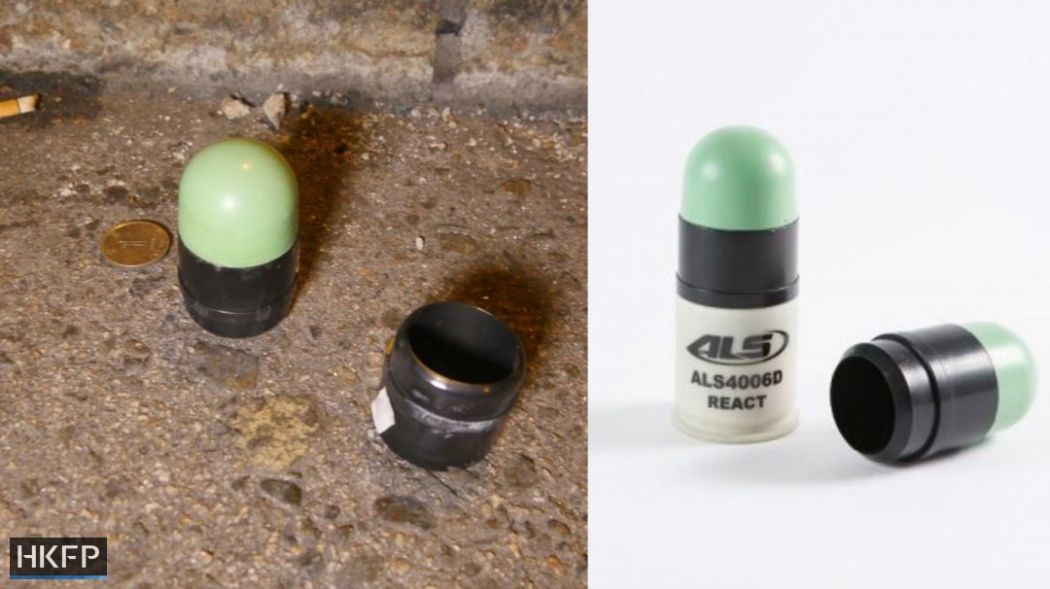
Hong Kong police said that it used 24 “sponge grenades” in Sheung Wan on July 21, the first time the weapon was publicly mentioned. It was also used in Yuen Long on Saturday and Sheung Wan again on Sunday, though police have not disclosed the number of shots fired.
American manufacturer ALS did not respond to HKFP’s request for comment on whether it plans to continue selling its products to Hong Kong.
Whilst they are meant to be non-lethal, a 16-year-old was killed in Israel by a sponge round, according to AFP.
Rubber bullets (MP-4-R3 Hard Rubber Baton Projectile, ALS1202 Rubber Fin Rocket)
Demosisto researcher Chris Kwok, who studied the pictures of weapons used, told HKFP that police recently switched to a different type of rubber bullet.

“In the past, it was a single-projectile round, but now it is a triple-projectile round. And it’s listed as ‘hard rubber’ and is one of the stronger types in the series,” he said.
Its manufacturer noted that the round contains “three hard rubber batons that are skip fired toward the subject” and is meant for long-range crowd control.
American manufacturer NonLethal Technologies did not respond to HKFP’s request for comment.
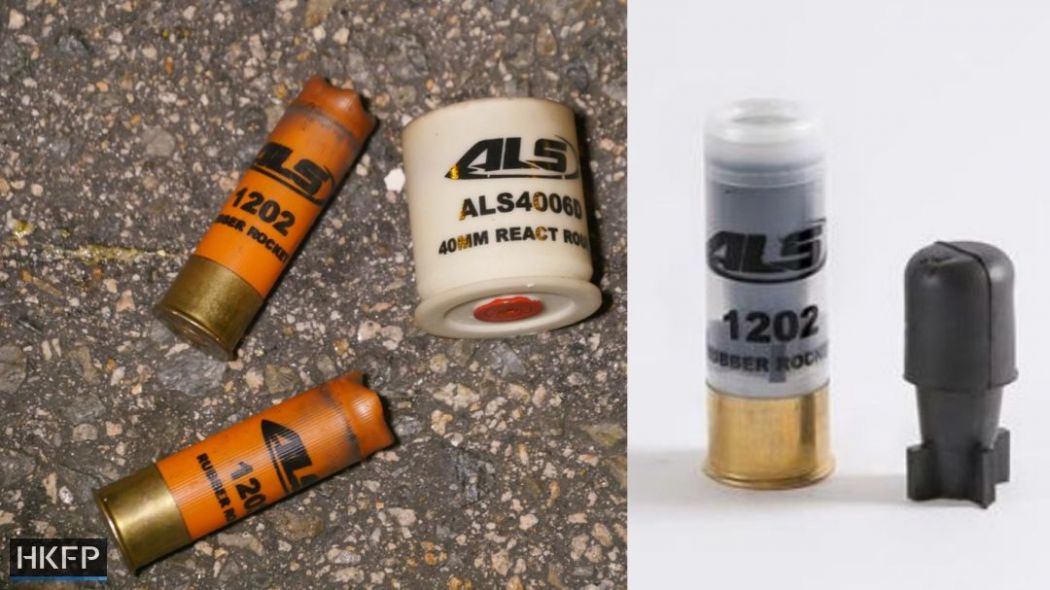
While the “triple rubber baton” rounds appeared to be a new addition, police have continued to use a smaller kind of rubber bullet – the ALS rubber fin rocket. ALS1202 shells, orange in colour, were found in Yuen Long and Sheung Wan over the weekend, alongside the shells for the “triple rubber baton.”
According to research by the British Journal of Surgery, rubber bullets can also potentially be lethal and have led to people suffering “permanent disabilities or disfigurements.”
Tear gas (Rubber Bursting CS Grenade – N225, MP-6M5-CS Multi-Smoke Projectile)
Hong Kong police use at least two dispersal methods for tear gas, formally known as CS gas. The first is in the form of a grenade thrown by hand, which will burst into “multiple small CS payloads,” according to its UK manufacturer Chemring Defence.
On June 25, the UK suspended export licences for crowd control equipment to Hong Kong, though there were reportedly no live export licences at the time.
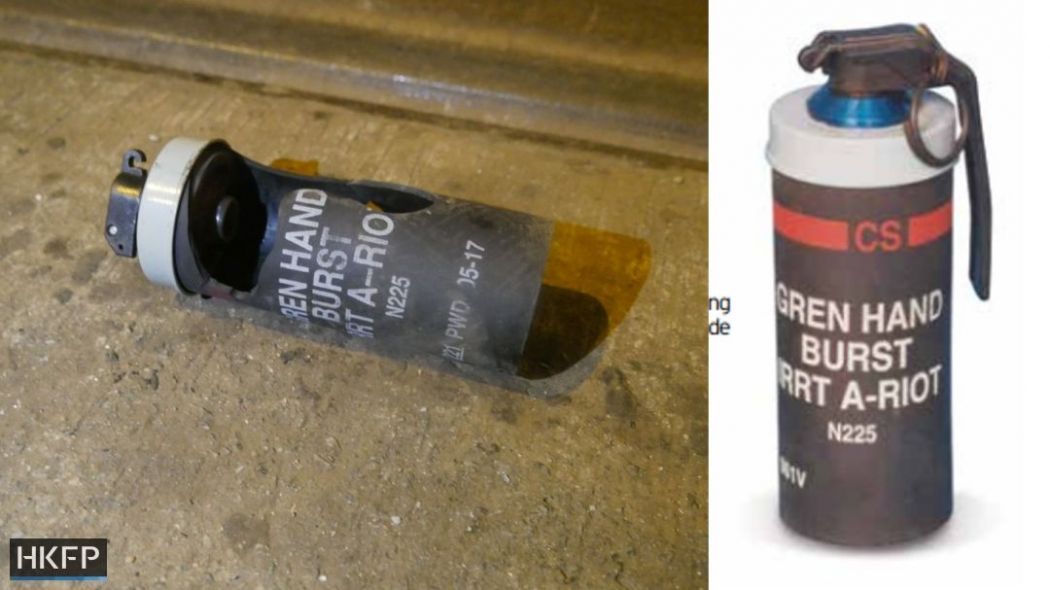
“We will not issue any further export licenses for crowd control equipment to Hong Kong unless we are satisfied that concerns raised on human rights and fundamental freedoms have been thoroughly addressed,” Foreign Secretary Jeremy Hunt said.
Chemring Defence, which had recently undergone an ownership change, did not respond to a request for comment.
Police also used launchers to fire CS rounds, which each contained five separate submunitions.
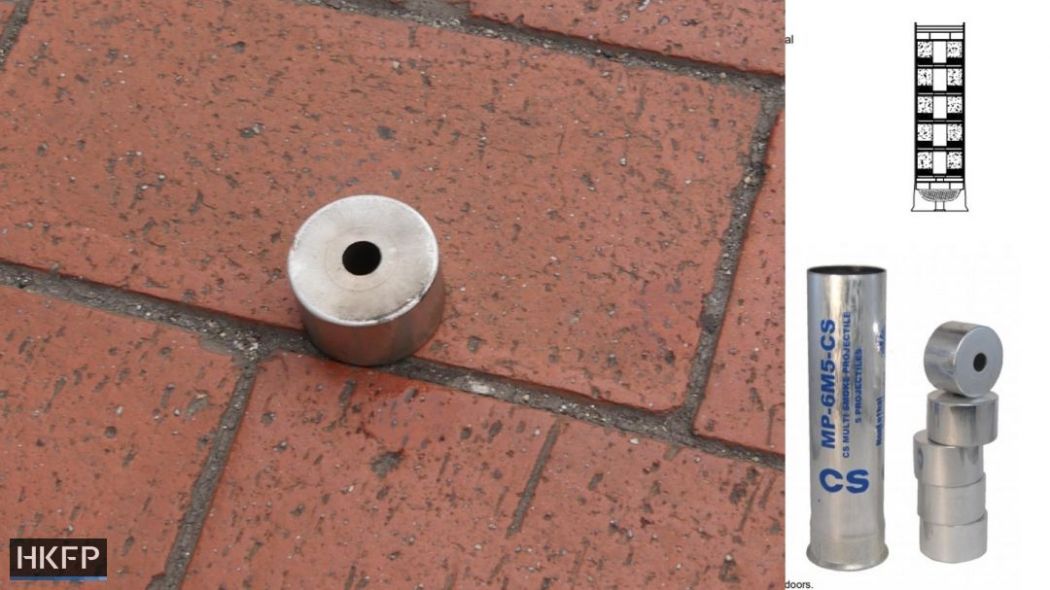
“The multiple submunitions provide a wide area of coverage for quick dispersal and control of crowds. The submunitions are launched up to 80 meters and release smoke for approximately 20 seconds each,” according to the American manufacturer NonLethal Technologies.
The manufacturer noted that the “MP-6M5-CS Multi-Smoke Projectile” qualifies as a pyrotechnic and could be a fire hazard.
Kwok told HKFP that the tear gas submunitions, due to their high temperatures, caused small fires in Sheung Wan when they landed on combustible objects like cardboard paper.

Reporters in Yuen Long and Sheung Wan also noticed a larger number of shells on the ground, which appeared smaller and were often accompanied by white powder. The shells were suspected to be another method to disperse CS gas, but the lack of markings made identification difficult.
With Hong Kong set to see more protests into August, Hong Kong police have been testing water canon vehicles.
For the latest information on Specialised Crowd Management Vehicles (SCMV), Superintendent Louis Lau Siu-pong has the following messages.
就人群管理特別用途車輛的最新情況,劉肇邦警司有以下的訊息。 pic.twitter.com/o5Dp8IcvNM— Hong Kong Police Force (@hkpoliceforce) July 30, 2019
The three anti-riot vans, costing over HK$16 million, are currently being tested. Police say they will only be used in situations where there are serious injuries or loss of life, or if widespread destruction of property or road occupations are taking place.
